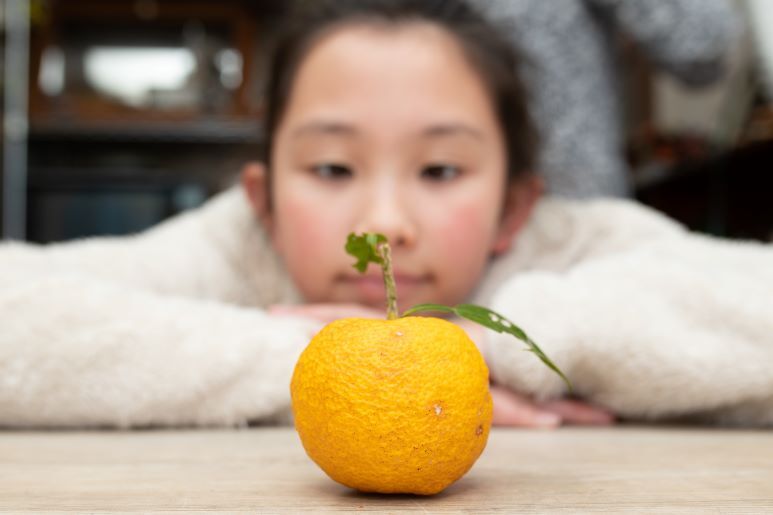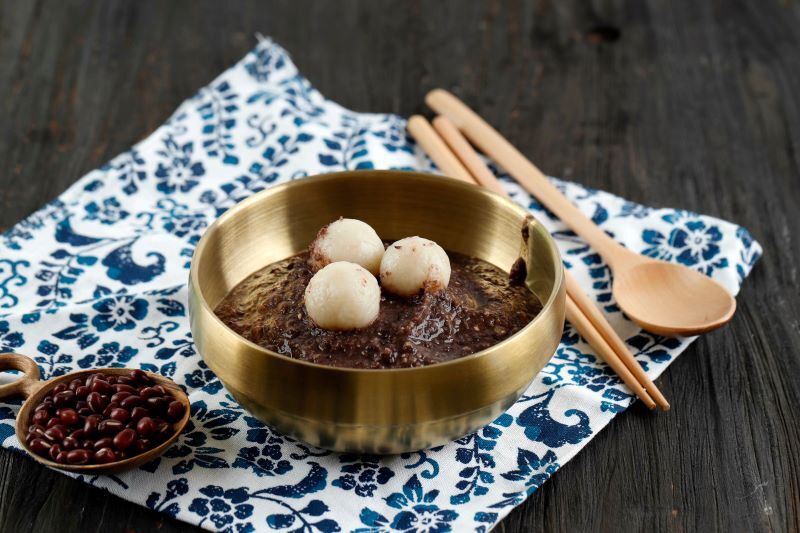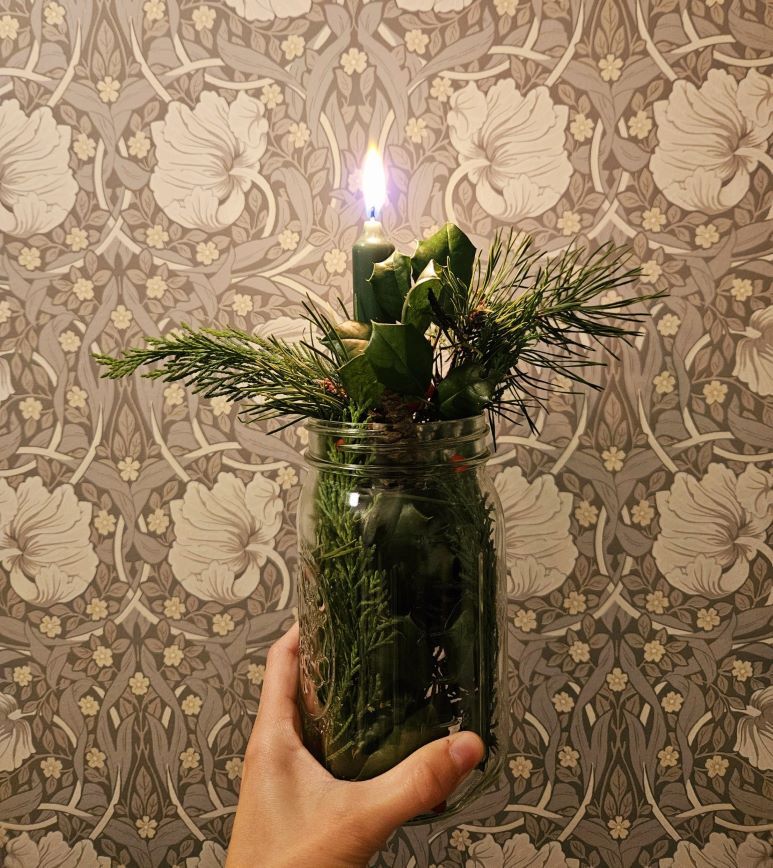December is a month of many holidays around the world, such as Christmas, Hanukkah, and Kwanzaa. But have you heard of the winter solstice? The winter solstice is the shortest day of the year and has been marked by various celebrations by different cultures for thousands of years. Your ancestors may even have celebrated the winter solstice!
What Is the Winter Solstice?

The word solstice means “sun stands still” in Latin. A solstice is the exact moment when the earth’s poles are most tilted towards or away from the sun. This phenomenon occurs twice a year: When the earth tilts toward the sun in the summer and when it tilts away from the sun in the winter.
This makes the winter solstice the shortest day of the year because it has the least amount of daylight hours, giving the winter solstice the nickname “the darkest day of the year.” The winter solstice typically lands on December 21 or 22 in the northern hemisphere, but in the southern hemisphere, the winter solstice happens on June 20 or 21.
People from around the world have different customs and celebrations to mark the winter solstice. Some cultures will cook festive foods, light lanterns, decorate a tree, or burn a Yule log to mark the occasion.
Though some solstice traditions are wrapped up in ancient and modern religious significance, not all of them are. Your nod to the shortest day may be just a feeling of excitement for longer, sunnier days around the corner!
Ancient Winter Solstice Traditions
Anthropologists and scholars have suggested that humans may have been observing the winter solstice as early as the latter part of the Stone Age.
Saturnalia
The Ancient Romans celebrated Saturnalia in December. This celebration started on the seventeenth day of December, and festivities included the day of the winter solstice. Gift-giving, lighting candles, and decorating their homes with greenery were just a few simple traditions they enjoyed.
Yule

The Germanic, Scandinavian, Norse, and Celtic peoples celebrated Yule on the winter solstice. Anciently, Yule was a celebration that, in some cases, lasted for 2 months! Norse people would have celebrated Yule with evergreens, holly, wreaths, a Yule log, and bells. There were also rituals such as animal sacrifice to the gods for a good harvest.
In ancient customs, burning the Yule log was believed to signal the return of the sun and usher in the beginning of spring. When adopted as a Christian custom, a Yule log became symbolic of the infant Christ Child at Christmas. People would leave the Yule log burning for the 12 days of Christmas. A small portion of the log is saved to light next year’s fire, and the ashes are scattered over a garden when it is time to plant seeds. In modern times, people will still select a Yule log to burn on the winter solstice or on Christmas. In France and Belgium, people even bake a traditional cake, “Bûche de Noël,” that looks like a Yule log.
Ancient Winter Solstice Sites
Many ancient cultures placed great significance on the winter solstice. Tombs, temples, stones, and other man-made sites that align with the sun at the solstice can be found all over the world, relics of a time gone by.
Newgrange, a tomb mound in Ireland built about 3200 BC, is aligned to direct attention to the sunrise on the winter solstice. Like a timepiece of the past, the winter solstice sun illuminates the floor chamber of Newgrange through a small window opening and lasts for 17 minutes. While Newgrange is set to celebrate the rising sun of the winter solstice, the setting sun of the winter solstice is seen at Stonehenge in Wiltshire, UK. Fort Ancient is also directed toward the sunset on winter solstice. Some locations are situated to observe both the rising and the setting of the winter solstice sun.

Here are some other ancient sites that align with the winter solstice:
- Angkor Wat (Cambodia)
- Ballochroy (United Kingdom)
- Chaco Canyon (New Mexico, United States of America)
- Chichén Itzá (Mexico)
- La Table des Marchands (France)
- Machu Picchu (Peru)
- Piedras Blancas (Spain)
- Pyramids of Giza (Egypt)
Winter Solstice Celebrations Around the World
Winter solstice customs and traditions are different around the world. Let’s take a look at how different cultures share a rich history of celebration.
Central Asia

Several Central Asian peoples celebrate Yalda on the winter solstice. This celebration signifies the victory of light over darkness. Some places where Yalda is especially common are Iran, Afghanistan, Tajikistan, Uzbekistan, Turkmenistan, and Armenia. Yalda has deep Persian roots. Also known as Shab-e-Yalda, Yalda is celebrated by Persians around the world. Some traditions include gathering with elderly members of the family to listen to stories of the past. Favorite foods and treats such as dried fruits, nuts, pomegranate, and watermelon keep the festivities going until well after midnight.
China

The winter solstice, or 冬至 (Dōngzhì), is one of the 24 solar terms in the traditional Chinese lunar calendar. It marks a time for family reunions and festive celebrations. Traditionally, families honor their ancestors on this day, expressing respect and gratitude while praying for their blessings of peace and prosperity in the coming year.
Today, many observe the custom of eating dumplings and Tangyuan (汤圆)—glutinous rice balls, often filled with sweet or savory fillings. The round shape of the rice balls symbolizes unity, completeness, and the hope for a harmonious and prosperous future.
Poetry is another important Chinese tradition around the winter solstice. Throughout history, many renowned Chinese poets have captured the spirit of the winter solstice in their works. Here is an example, called "Thinking of Home on Winter Solstice Night at Handan" (《邯郸冬至夜思家》), in both the original Chinese and an English translation:
抱膝灯前影伴身。
想得家中夜深坐,
还应说着远行人。
唐·白居易
Clasping my knees, my shadow is my company,
I think, till dead of night my family would stay,
And talk about the poor lonely wayfaring me.
Bai Juyi
England

If you are visiting England for the winter solstice, you might make a trek to Stonehenge and see the winter sun set over the stones. There are many groups of people who meet at Stonehenge that day. Some may participate in music and dancing.
Another unique festival held at the winter solstice is the Burning of the Clocks in Brighton and Hove. The people in these communities make simple or elaborate paper lanterns and parade them through the cities. They march down to the beach and put their lanterns on a large bonfire to mark the passage of time. There is also a fireworks display to end the evening.

Japan
The winter solstice is called Toji in Japan. Common Japanese winter solstice traditions include taking warm baths with yuzu fruit, lighting bonfires, and eating kabocha squash. Yuzu fruit is yellow, small, and bumpy and looks similar to a round lemon. Its citrus flavor is tart, and it is known for its aroma and medicinal properties. Eating kabocha squash on Toji is believed to bring good luck and keep you from catching a cold.
Korea

In Korea, people celebrate Dongji, and it is a time for families to come together. Dongji is sometimes known as “Little Lunar New Year.” A popular tradition is to give calendars as gifts. This custom dates back to the Joseon Dynasty, which began in 1392. Another fun gift tradition is to give quilted socks for good luck.
One of the most common Dongji traditions is to eat patjuk, a red bean porridge made with adzuki beans and rice flour dumplings. The color red is believed to ward off evil spirits.
Some families sprinkle the red adzuki beans around the house or make a porridge offering to the house deities and the family shrine. This practice is called dongji gosa, a traditional ancestral ceremony. After the offerings are made, the remainder of the patjuk is shared with the family.
Sweden
St. Lucia’s Day is celebrated in Sweden and is intertwined with Norse winter solstice traditions. This traditional festival of lights honors St. Lucia (also known as St. Lucy), a Christian martyr from about the 4th century. This holiday honoring her began to be celebrated in Sweden in the 18th century.
The festival typically begins with a parade and a proxy St. Lucia. Young girls dress in white and wear lighted wreaths on their heads. The boys are also dressed in white. Though today it is celebrated on December 13, in the old Julian calendar, the day of St. Lucia was about the same day as the winter solstice.

Map Your Ancestors
Do you have any ancestors from these parts of the world? If so, your ancestors may have celebrated the winter solstice and followed some of these traditions. You can see where in the world your ancestors are from with a free FamilySearch account.
Once you have created an account, start adding the names of your parents, grandparents, and great-grandparents. Some of these individuals may already be in the shared family tree, and your tree will populate with the ancestors already in the shared tree.
You can use the Where Am I From experience to see on a map where the major life events of your ancestors occurred, including their births, marriages, deaths, and immigration events.
Fun Winter Solstice Activities from Home
A winter solstice celebration at home might be the perfect thing to bring a family together. Here are some fun ways to mark the winter solstice.

Light Candles and Make Decorations
One of the most popular winter solstice traditions is to light lanterns or candles. You can even make a creative decoration by gathering leaves, berries, sticks, and other tokens from nature and putting them into a mason jar with a tea light or candle.
Decorate a Solstice Tree
A great family activity is working together to decorate a live outdoor tree with edible ornaments for birds and other animals. Imagine a festive pine tree with ornaments of dried orange slices, peanut butter and birdseed pinecones, popcorn strings, and berry garland. Not only is it pretty to look at, but it also feeds the winter critters on a cold day.
Make Wassail
You can also warm up your winter solstice evening with a delicious cider wassail. Wassail is derived from an old English phrase meaning “good health.” This spiced drink can be made in many different ways, but it traditionally includes cider, sugar, cinnamon, ground cloves, and apples or orange slices. It will warm the belly, and your whole house will smell delightful. Check out this recipe to make your own Wassail!
Your Family’s Winter Solstice Traditions and Customs
If you have heard stories about your ancestors or relatives celebrating the winter solstice with traditions and customs, take some time this year to write them down. Taking a few minutes to record your own experiences with the Winter Solstice could also help preserve a part of your family's history. You can add these stories to FamilySearch Memories, and the whole family can enjoy reading about it.
If your ancestors didn’t observe the winter solstice, you might consider starting a new tradition with your own family this year. We would love to hear from you! Please share with us your winter solstice traditions in the comments below.
Related Articles
At FamilySearch, we care about connecting you with your family, and we provide fun discovery experiences and family history services for free. Why? Because we cherish families and believe that connecting generations can improve our lives now and forever. We are a nonprofit organization sponsored by The Church of Jesus Christ of Latter-day Saints. To learn more about our beliefs, click here.






